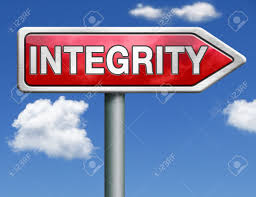Building a Company Culture of Trust
 The messaging behind the need for companies to implement robust compliance programs continues to suffer from a narrow conception of the overall compliance function. It is easy to get lost in the weeds on compliance programs and focus on compliance tasks, policies, resources, assessments and audits.
The messaging behind the need for companies to implement robust compliance programs continues to suffer from a narrow conception of the overall compliance function. It is easy to get lost in the weeds on compliance programs and focus on compliance tasks, policies, resources, assessments and audits.
I have promoted a different messaging approach – one that gives full credit and priority to a robust compliance program, but emphasizes a bottom-line financial benefit to the company and focuses on promoting an ethical culture. As I tell everyone (or anyone who will listen), a company has to aim high to promote and advance a culture of ethics and compliance, not to ensure compliance with the laws and the company’s code of conduct, but to contribute to the bottom line.
The connection between an ethical culture and financial productivity and sustainability is beyond dispute. Common sense, of course, supports such a proposition but research has confirmed the same connection. Of course, that does not mean that a company with an ethical culture will always earn a profit but a culture of ethics will contribute to the overall bottom line (possibly reducing the extent of financial losses).
Steven Covey and Douglas Conant wrote an interesting article, The Connection Between Employee Trust and Financial Performance, published in the Harvard Business Review, outlining the important link between trust and corporate profitability. A link to the article is here.
Doug Conant is the former CEO of Campbell’s Soup Company, and the authors use his experience at Campbell’s to illustrate the importance of trust and corporate ethics. As noted by the authors, “cultivating a high-trust culture is not a soft-skill – it’s a hard necessity.”
Doug Conant spearheaded a 10-year turnaround at Campbell’s Soup Company. Building a culture of trust led to increased profits and extraordinary employee engagement. In the authors’ view, trust building creates opportunities for sustainable growth and tangible improvements in the marketplace.
In those companies where trust exists as a part of its workplace culture, companies will exceed average annualized earnings for the S&P 500 companies by a factor of three. The authors also reference a 2015 study showing that companies with a high-trust culture are 2 ½ times more likely to be a “high performing revenue organization.”
To simplify the connection between culture and profitability, the authors argue that a high trust culture increases speed or productivity and reduces company costs; the absence of such a culture slows production and increases company costs.
The authors explain how to build a culture of trust through three-step process: declaring intent; demonstrating respect; and delivering results.
As stated by the authors, declaring intent demonstrates commitment and reduces resistance; it is provides a standard by which to hold leadership accountable. In the case of Doug Conant, he cited an example of how he met with his direct reports at Campbell’s Soup and informed them of his expectations in their working relationship and encouraged greater communications with his direct reports during the transition phase of his new leadership team.
 The authors also recounted how Doug Conant demonstrated respect for his employees and the company by taking actions to improve the working environment at the company facility. He also wrote thousands of handwritten notes of gratitude to individual employees to recognize them for their specific accomplishments to overall company performance.
The authors also recounted how Doug Conant demonstrated respect for his employees and the company by taking actions to improve the working environment at the company facility. He also wrote thousands of handwritten notes of gratitude to individual employees to recognize them for their specific accomplishments to overall company performance.
To deliver results, a leader has to commit to results and demonstrate his or her ability to perform and meet specific goals. Doug Conant cited an example when he was a Vice President of Marketing at Nabisco and was viewed by employees as lacking in experience. To build trust with employees, he committed to certain financial targets for future quarters and made sure the division met these projected targets.
The authors conclude that trust building is a learnable skill, and that there is a virtuous circle with a high-trust and high-performance culture.
















1 Response
[…] Building a Company Culture of Trust […]